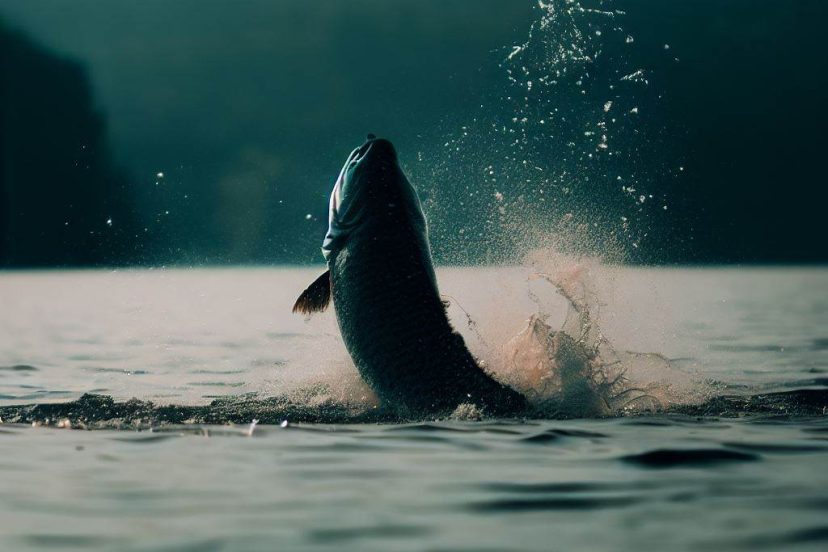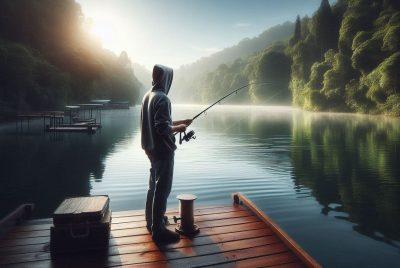Fishing Hole – Do They Exist?
*We may earn a commission for purchases made using our links. Please see our disclosure to learn more.
Fishing Hole Essentials: Selecting Your Perfect Spot
A fishing hole is a colloquial term that fishermen use to describe a spot where they consistently find and catch fish. Over the years, I’ve learned that these spots can be anywhere from a secluded bend in a river to a well-known area off a lake’s shoreline. The allure of a fishing hole is not just the promise of a successful catch, but also the personal connection that an angler develops with the spot. Finding a good fishing hole is akin to discovering a hidden treasure, one that requires patience, experience, and sometimes a bit of luck.
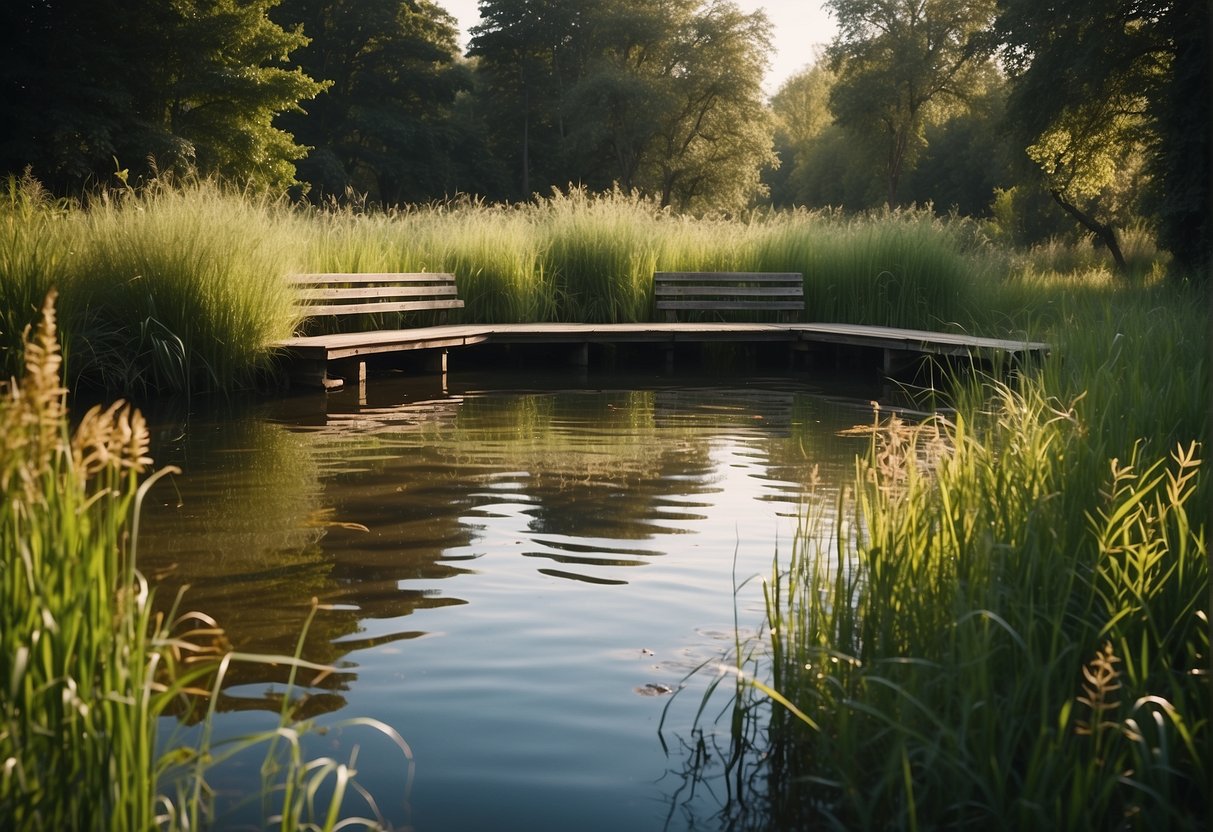
Maintaining the secrecy of a personal fishing hole is a time-honored tradition among anglers. While sharing fishing stories is common, the exact location of a prized spot is often kept under wraps. This secrecy helps preserve the spot’s integrity and fish population, ensuring that it continues to provide the solitude and abundance that make it special. However, I appreciate that sometimes sharing knowledge can help preserve fishing environments and enhance the overall experience, especially for newcomers eager to learn.
In my experience, understanding the local ecosystem and the behavior of fish throughout different seasons is critical to identifying a productive fishing hole. Subtle signs in the water, knowledge of fish feeding patterns, and the right gear all contribute to the experience. I’ve frequented tackle shops and sometimes even trusted online stores to equip myself with the appropriate rods, reels, lines, and lures. It’s not just about having the right equipment; it’s about respecting the sport, the fish, and our cherished fishing holes.
Essential Fishing Hole Basics
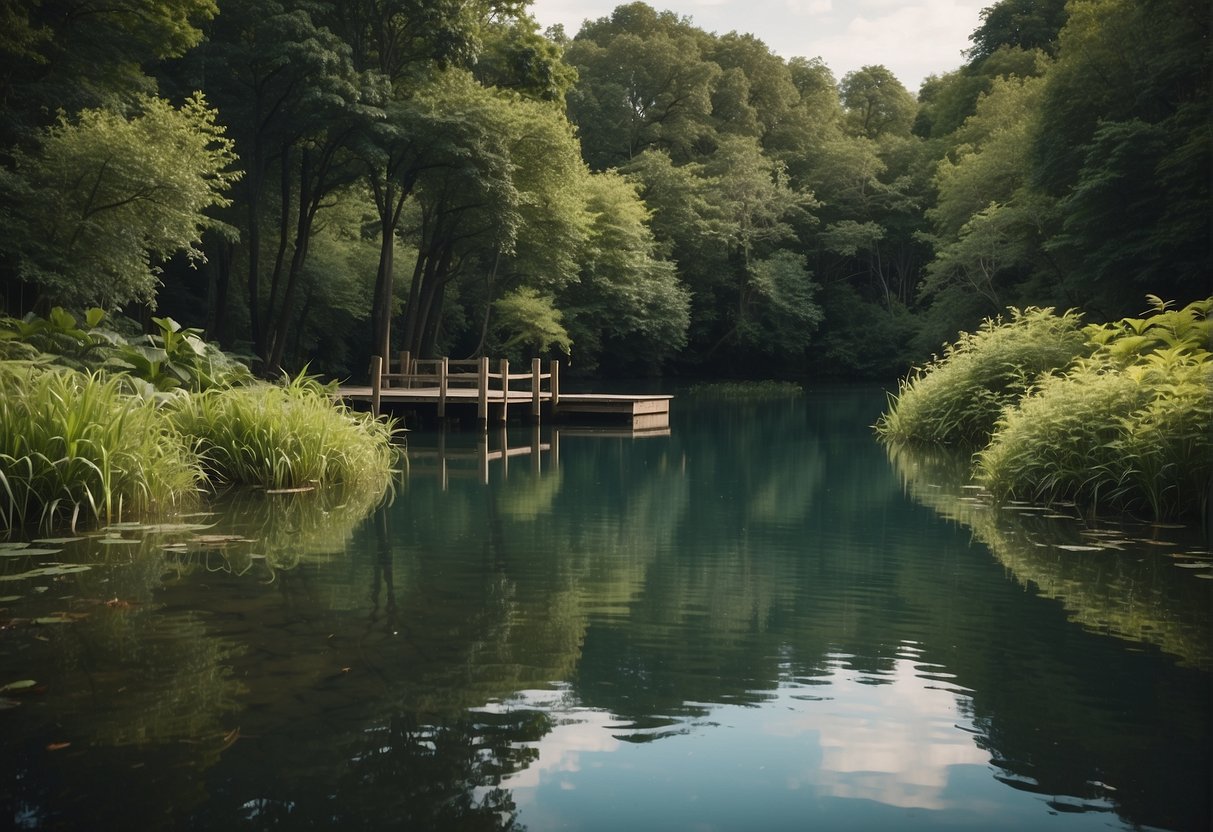
When selecting and maintaining a fishing hole, I consider not only my immediate success in catching fish but also the long-term health of the aquatic ecosystem. Let’s explore how to choose the right spot, understand fish habitats, and ensure fishing hole conservation.
Choosing the Right Fishing Hole
The perfect fishing spot depends largely on the fish species I’m targeting. I make a point to research the preferred habitat of the fish, whether it’s trout, bass, catfish, crappie, or bluegill. For river and stream fishing, areas with a moderate current are often fruitful, as they bring food to the fish and keep the water oxygenated. Conversely, in lakes, I look for areas where the natural structure creates an ideal environment for fish, such as drop-offs or weed beds.
Understanding Fish Habitats
Fish species have specific preferences for their habitats:
- Trout: Often found in cold, clear streams and rivers; they prefer a strong current and gravel bottom.
- Bass: They typically favor sheltered spots in lakes or rivers, such as around submerged logs or vegetation.
- Catfish: Usually bottom dwellers, they’re attracted to deep, slow-moving parts of rivers and muddy areas of lakes.
- Crappie and Bluegill: These species are often found in the still waters of lakes and ponds, near structures like weed beds or fallen trees.
Knowing these preferences, I select my fishing hole accordingly to maximize my chances of a successful catch.
Fishing Hole Conservation
When I frequent a fishing hole, I have an unwavering commitment to conservation:
- Do not litter: Keep the area clean so it remains a welcoming place for fish.
- Handle fish with care: When practicing catch and release, I handle fish gently to minimize stress and injury.
- Adhere to regulations: I always follow local fishing guidelines to help maintain fish populations.
By respecting these principles, I help ensure that my favorite fishing spots remain vibrant and productive for future anglers.
Fishing Hole – Techniques and Strategies
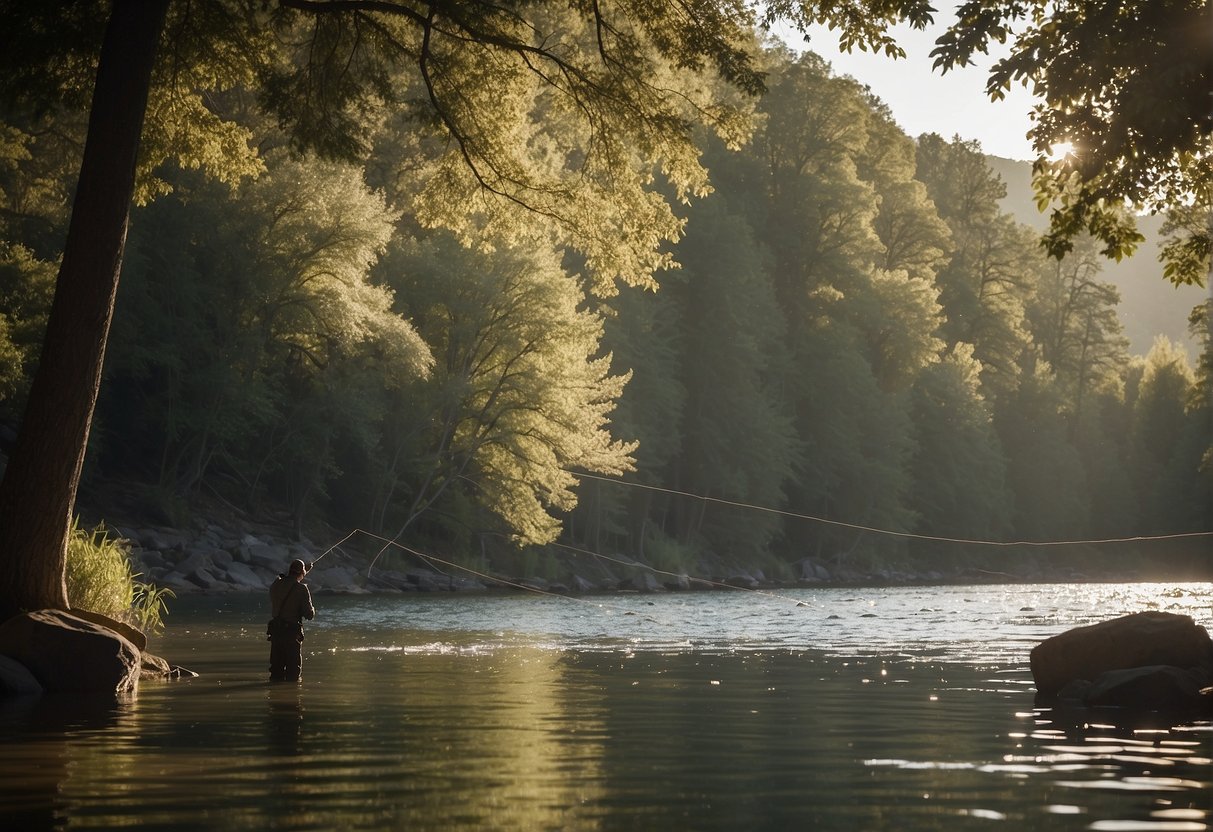
When it comes to successful fishing, choosing the right strategy and technique is paramount. My intention is to provide targeted advice to enhance your fishing experience.
Bait and Lure Selection
To attract fish, I select bait and lures based on the specific fish species I’m targeting. Live bait is effective due to its natural appearance and scent, making it irresistible to fish. For instance, worms are excellent for freshwater angling, while squid pieces work well in saltwater. When it comes to lures, I opt for those that mimic the appearance and movement of prey fish. Sustainable practices are important; therefore, I always choose biodegradable or reusable options when possible.
- Freshwater Lures:
- Spinnerbaits
- Crankbaits
- Soft plastics
- Saltwater Lures:
- Jigs
- Poppers
- Spoons
Fly Fishing Fundamentals
My fly fishing approach emphasizes understanding the river’s ecology. Fly fishing involves using a lightweight lure, known as a fly, which requires a special casting technique distinct from other forms of fishing. I focus on reading the water to identify feeding patterns and choose a fly that matches the local insects or baitfish.
- Essential Flies:
- Dry Flies
- Nymphs
- Streamers
The Art of Casting
Casting is crucial, whether I’m onshore or in a kayak. I practice to perfect my overhead cast for distance and accuracy, essential for covering large areas of water. In tighter spots, a controlled flip cast allows me to present the bait precisely where the fish are hiding, often along banks or under overhanging trees.
Boat Fishing vs Shore Fishing
I consider both boat and shore fishing to be effective but for different reasons. Boat fishing allows me to access deeper waters and cover a wider area, often using techniques like trolling with a fishing net. Conversely, shore fishing requires strategic casting and an understanding of tidal patterns. Here’s how I differentiate my approach for each:
- Boat Fishing:
- Advantage of mobility
- Employ fishing nets when permissible
- Use depth finders to locate fish
- Shore Fishing:
- Knowledge of local conditions is key
- Focus on natural structures like docks and weed beds
- Tidal movements inform my fishing times
In both scenarios, I stay mindful of environmental regulations and local wildlife conservation efforts.
Gear and Equipment
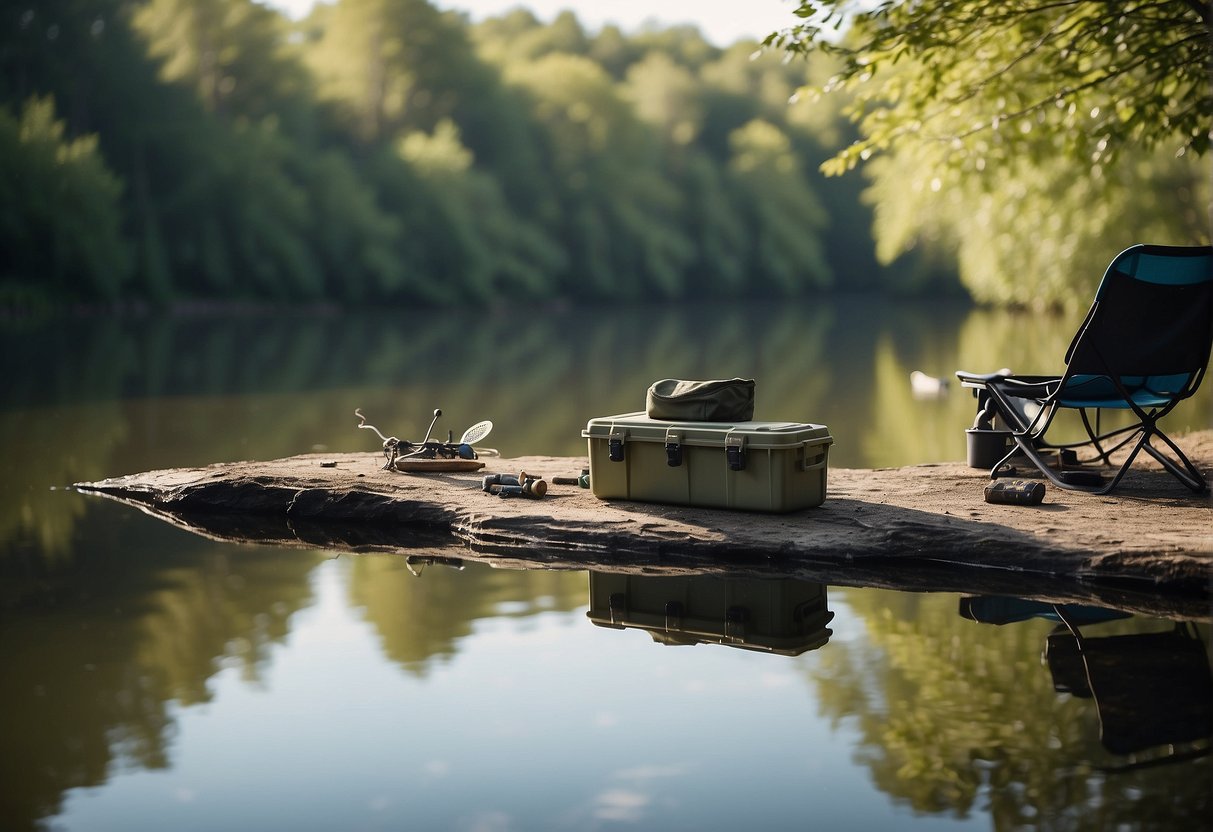
When I head to the Tyrhold fishing hole, I make sure to have all the necessary gear for a successful day of fishing. From securing a fishing license to choosing the right equipment, preparedness is key. Here’s a detailed checklist and some tips on advanced tools and gear maintenance.
Essential Fishing Gear Checklist
- Fishing License: Ensure you have a valid fishing license for the Tyrhold fishing hole area.
- Rod and Reel: A balanced rod and reel combo suited to the type of fish you’re targeting.
- Fishing Line: Quality fishing line suitable for your targeted species and conditions.
- Bait and Lures: A variety of bait and lures, specific to the fish you aim to catch.
- Hooks: An assortment of hooks to match
Fishing Hole – Rules and Regulations
When I approach fishing at any fishing hole in the USA, I make sure to familiarize myself with the local rules and abide by them to ensure a responsible and legal fishing experience.
Fishing License Requirements
To fish in most states within the USA, including those like Oklahoma as mentioned in my findings, I am required to possess a valid fishing license. Licenses can usually be purchased from authorized fishing license vendors which include online platforms, local tackle shops, and sometimes through department offices that oversee wildlife conservation. During certain events, such as the “Free Fishing Days” on June 1 – 2, 2024 in Oklahoma, I can fish without a state license, although special permits, like a paddlefish permit, might still be required.
Local Fishing Regulations
Each area or state has distinct local fishing regulations that govern the fishing activities. These can include specifics on size limits, bag limits, and the types of gear I am allowed to use. For example, in Texas, there are rules around legal devices, methods, and restrictions that I need to follow. I can usually find these detailed in the state’s Outdoor Annual or through official state wildlife department websites.
Local Fishing Regulations:
- Size Limits: Dictates the minimum or maximum size of fish I can keep.
- Bag Limits: Defines how many total fishes of a particular species I can catch in a day.
- Gear Restrictions: Outlines the type of equipment I’m authorized to use while fishing.
Understanding Catch and Release Policies
Catch and release policies are crucial for conservation efforts, and they’re part of the regulations I adhere to. These policies involve practices like using barbless hooks for easier release and minimizing the time fish are out of water. The aim is to ensure the survival of fish after they are released back into their habitat. Catch and release policies may vary by state and sometimes by waterbody, thus it’s essential to review these regulations before I begin to fish.
Fishing Hole: Complementary Outdoor Activities
When I explore the great outdoors, I’m always seeking experiences that enhance my fishing trips. I find that camping and traversing nearby trails provide a fuller, richer outdoor adventure.
Camping Near Fishing Spots
I prefer campsites that are a stone’s throw from prime fishing holes. Here’s what I look for:
- Proximity to the water: Being close allows for early morning starts, which is perfect for catching species like stripers that are often more active at dawn.
- Facilities such as boat ramps: Easy water access is key for those who prefer to fish off a boat.
- Availability of campgrounds with amenities: For those who want a bit more comfort, I recommend campsites with full hookups, showers, and other facilities.
- Respect for the environment: Maintaining the beauty of these natural habitats is a responsibility I take seriously, ensuring that future generations will enjoy the same experiences.
Hiking Trails and Biking Paths
While fishing is my main passion, I also indulge in hikes and bike rides to connect with nature and meet locals who often have the best tips for fishing spots.
- Hiking: Provides a serene escape and tests my endurance, especially on trails that wind through the landscape offering views of the water.
- Mountain Biking: For a faster pace, nearby biking paths offer a thrilling experience. It’s not only an excellent workout but sometimes leads to undiscovered fishing spots off the beaten path.
From my tent, I can often find trails that lead to tranquil locations where swimming is an additional joy during the warmer months. Overall, harmonizing my love for fishing with camping, hiking, and biking leads to the most memorable outdoor escapades.
FAQs About a Fishing Hole
In this section, I’ll cover some of the most common queries anglers have when preparing for fishing excursions, ranging from spot selection to gear essentials.
1. How do I identify a good saltwater fishing hole spot?
I look for areas where there is a lot of natural or man-made structure as these often attract fish. A good saltwater spot would have features such as reefs, wrecks, and estuaries, which provide excellent habitats for a variety of species.
2. What essential gear should I have for a successful fishing trip?
My essential gear list includes a solid fishing rod and reel combo, a variety of bait and lures tailored to the target species, a tackle box with assorted hooks, sinkers, and line, as well as a fishing license if required by the location.
3. Where can I find reputable fishing supply stores in my area?
I often use online search tools and look for customer reviews to find reputable fishing supply stores nearby. Alternately, I might join local angling communities on social media where I can get recommendations for stores that carry quality gear.
4. What are the benefits of using sonar equipment while fishing?
Using sonar equipment helps me locate fish by providing an underwater view and indicating depth, bottom contours, and structures that might not be visible to the naked eye. It’s a great tool for pinpointing fishing hot spots.
5. How do I choose the right fishing reel for my needs?
I determine the right fishing reel based on the type of fishing I’m planning to do. For lighter bait and smaller fish, a spinning reel might be ideal, whereas for bigger game and trolling, I might opt for a baitcaster or a conventional reel.

